Content Mismanagement – Pitfalls of Website Content Management Systems
A Content Management System (CMS) can make it easy for a website owner to update and manage their online content themselves, providing convenience and potential cost savings.
There is, however, a downside to online CMS which can undermine the effectiveness of a website’s communication, navigation and overall useability. If a website has been created well during design and development the visual presentation, brand integration, site navigation and clear communication of content have all been carefully considered. If over time content is added, updated, moved and removed without consideration and professional insight a website can change from a valuable business tool to a potential liability that loses the investment of time and money it took to originally produce the website.
Adding new website content
Adding new content to an existing website has the potential of weakening the effectiveness of its communication. Increased content can clutter a website with information of limited relevance and interest to the target audience making it harder to find important and valuable information. Content placed in sections and categories of a website’s structure that are inappropriate can make it difficult to find, confusing the audience and undermining the useability of a website. Adding information from different sources can introduce inconsistencies in both written and visual style reducing the professionalism of a website to the detriment of the organisation or product it represents.
If you are a website content manager and plan to add new content ask yourself ‘are there benefits to having this information on my website?’. If the answer is yes then ask ‘where is the most appropriate place for this information?’. After adding the new content review whether it can be found easily and if it follows on logically from other content on the site.
When adding new content proofread it to make sure it fits with the written style of existing copy. Review imagery to ensure the style and professionalism is consistent with existing imagery. Amateur snapshots or tacky stock imagery can be the quickest way to ruin the professional presentation of any corporate or product communications.
Changing and updating website content
A CMS is great when you need to change details of a product or service or update the profiles of staff members, but it can be a prime opportunity for small errors and inconsistencies. Incorrect formatting of text, extra line spaces and the introduction of different writing styles are all small things that can diminish the professionalism of a website over time and lessen a visitor’s trust in the company’s brand and offering.
Changing information can also affect how your website performs with search engines like Google. If keywords and phrases are used in your copy that also match your page title and description tags (inside the website code) then changing copy so they no longer align or are not relevant can reduce your ranking on search engines. Make sure you know your keywords and ensure these aren’t edited out of your copy.
When adding or changing content look at how existing information is presented and ensure any amends follow the same rules. For example, if you write dates as 17 November 2009 don’t use other styles like 17/11/09 or even 17th November 09. If a title is in bold or a certain colour make sure any new titles follow suit.
Review and appraise
A website is an important and dynamic business tool that is essential for most businesses today. The ability to control content quickly and cheaply is a desirable feature most website owners want. If you manage your own website or plan to in the future, make sure you regularly monitor content changes. It is also advisable to schedule periodic reviews by an experienced web designer or copywriter to get a professional appraisal to ensure your investment of time and money doesn’t diminish over time.
Posted 10 November 2009
Next